




Tuesday 3 October, 7.30pm, Stirling Castle

Wednesday 4 October, 7.30pm, Ayr Town Hall
The Ayr concert is subsidised by The Scottish Children's Lottery Trust, Destination South Ayrshire, and Ayr Arts Guild.
Friday 6 October, 3pm, Castlebrae Community High School, Craigmillar
Saturday 7 October, 7.30pm, Aberdeen Music Hall
JAY CAPPERAULD The Origin of Colour (World Premiere, SCO Commission)
Commissioned by the Scottish Chamber Orchestra, and with generous support from the Vaughan Williams Foundation and the Hinrichsen Foundation.
BRUCH Concerto for Clarinet and Viola
Interval of 20 minutes
BEETHOVEN Symphony No 3 ‘Eroica’
Maxim Emelyanychev Conductor

Maximiliano Martín Clarinet

Max Mandel Viola
Maxim Emelyanychev

Our Principal Conductor’s Circle is made up of individuals who are a special part of our musical family. Their commitment and generosity benefit us all – musicians, audiences and creative learning participants alike.
Benefactor
Carol Grigor
Annual Fund
James and Patricia Cook
Visiting Artists Fund
Colin and Sue Buchan
Harry and Carol Nimmo
Anne and Matthew Richards
International Touring Fund
Gavin and Kate Gemmell
Conductor Emeritus Joseph Swensen
Donald and Louise MacDonald
Chorus Director Gregory Batsleer
Anne McFarlane
Principal Second Violin
Marcus Barcham Stevens
Jo and Alison Elliot
Principal Viola Max Mandel
Kenneth and Martha Barker
Viola Steve King
Sir Ewan and Lady Brown
Principal Cello Philip Higham
The Thomas Family
Cello Donald Gillan
Professor Sue Lightman
American Development Fund
Erik Lars Hansen and Vanessa C L Chang
Productions Fund
Bill and Celia Carman
Christine Lessels
Anny and Bobby White
The Usher Family
Scottish Touring Fund
Eriadne and George Mackintosh
Claire and Anthony Tait
Cello Eric de Wit
Jasmine Macquaker Charitable Fund
Principal Double Bass Nikita Naumov
Caroline Hahn and Richard Neville-Towle
Principal Flute André Cebrián
Claire and Mark Urquhart
Principal Oboe Robin Williams
In memory of Hedley G Wright
Principal Clarinet Maximiliano Martín
Stuart and Alison Paul
Principal Bassoon Cerys Ambrose-Evans
Claire and Anthony Tait
Principal Timpani Louise Lewis Goodwin
Geoff and Mary Ball




Diamond
Malcolm and Avril Gourlay
John and Jane Griffiths
James and Felicity Ivory
Clair and Vincent Ryan
William Samuel
Alan and Sue Warner
Platinum
David Caldwell in memory of Ann
Dr Peter Williamson and Ms Margaret Duffy
Judith and David Halkerston
J Douglas Home
Audrey Hopkins
David and Elizabeth Hudson
Dr and Mrs Peter Jackson
Dr Daniel Lamont
Chris and Gill Masters
Duncan and Una McGhie
Anne-Marie McQueen
James F Muirhead
Patrick and Susan Prenter
Mr and Mrs J Reid
Martin and Mairi Ritchie
Hilary E Ross
Elaine Ross
George Rubienski
Jill and Brian Sandford
Michael and Elizabeth Sudlow
Robert and Elizabeth Turcan
Finlay and Lynn Williamson
Dr Peter Williamson and Ms Margaret Duffy
Ruth Woodburn
William Zachs
Gold
Lord Matthew Clarke
Jo and Christine Danbolt
James and Caroline Denison-Pender
Andrew and Kirsty Desson
David and Sheila Ferrier
Chris and Claire Fletcher
Dr J W E Forrester
James Friend
Margaret Green
Iain Gow
Christopher and Kathleen Haddow
Gordon Kirk
Robert Mackay and Philip Whitley
Mike and Karen Mair
Anne McAlistair and Philip Sawyer
Roy and Svend McEwan-Brown
John and Liz Murphy
Alison and Stephen Rawles
Andrew Robinson
Olivia Robinson
Irene Smith
Ian S Swanson
John-Paul and Joanna Temperley
Bill Welsh
Catherine Wilson
Neil and Philippa Woodcock
G M Wright
Bruce and Lynda Wyer
Silver
Roy Alexander
Pamela Andrews and Alan Norton
Dr Peter Armit
William Armstrong
Fiona and Neil Ballantyne
Timothy Barnes and Janet Sidaway
The Batsleer Family
Jack Bogle
Jane Borland
Alan Borthwick
Michael and Jane Boyle
Mary Brady
Elizabeth Brittin
John Brownlie
Laura Buist
Robert Burns
Sheila Colvin
Lorn and Camilla Cowie
Philip Croft and David Lipetz
Lord and Lady Cullen of Whitekirk
Adam and Lesley Cumming
Dr Wilma Dickson
Sylvia Dow
Dr and Mrs Alan Falconer
Sheila Ferguson
Malcolm Fleming
Dr William Irvine Fortescue
Jeanette Gilchrist
Dr David Grant
Margaret Green
Andrew Hadden
J Martin Haldane
Ronnie and Ann Hanna
Ruth Hannah
Robin Harding
Roderick Hart
Norman Hazelton
Ron and Evelynne Hill
Philip Holman
Clephane Hume
Tim and Anna Ingold
David and Pamela Jenkins
Catherine Johnstone
Julie and Julian Keanie
Marty Kehoe
Professor Christopher and Mrs Alison Kelnar
Dr and Mrs Ian Laing
Janey and Barrie Lambie
Graham and Elma Leisk
Geoff Lewis
Dorothy A Lunt
Vincent Macaulay
Isobel and Alan MacGillivary
James McClure in memory of Robert Duncan
Gavin McCrone
Brian Miller
James and Helen Moir
Alistair Montgomerie
Margaret Mortimer and Ken Jobling
Andrew Murchison
Hugh and Gillian Nimmo
David and Tanya Parker
Hilary and Bruce Patrick
Maggie Peatfield
John Peutherer in memory of Audrey Peutherer
James S Potter
Alastair Reid
Fiona Reith
Catherine Steel
Michael and Jane Boyle
Ian Szymanski
Takashi and Mikako Taji
Douglas and Sandra Tweddle
James Wastle
C S Weir
We believe the thrill of live orchestral music should be accessible to everyone, so we aim to keep the price of concert tickets as fair as possible. However, even if a performance were completely sold out, we would not cover the presentation costs.
We are indebted to everyone acknowledged here who gives philanthropic gifts to the SCO of £300 or greater each year, as well as those who prefer to remain anonymous. We are also incredibly thankful to the many individuals not listed who are kind enough to support the Orchestra financially, whether that is regularly or on an ad hoc basis. Every single donation makes a difference and we are truly grateful.
Become a regular donor, from as little as £5 a month, by contacting Hannah Wilkinson on 0131 478 8364 or hannah.wilkinson@sco.org.uk.
THE TIMES
The Former Duke of Rothesay
Patron
Donald MacDonald CBE
Life President
Joanna Baker
Chair
Gavin Reid
Chief Executive
Maxim Emelyanychev
Principal Conductor
Joseph Swensen
Conductor Emeritus
Gregory Batsleer
Chorus Director
Jay Capperauld
Associate Composer
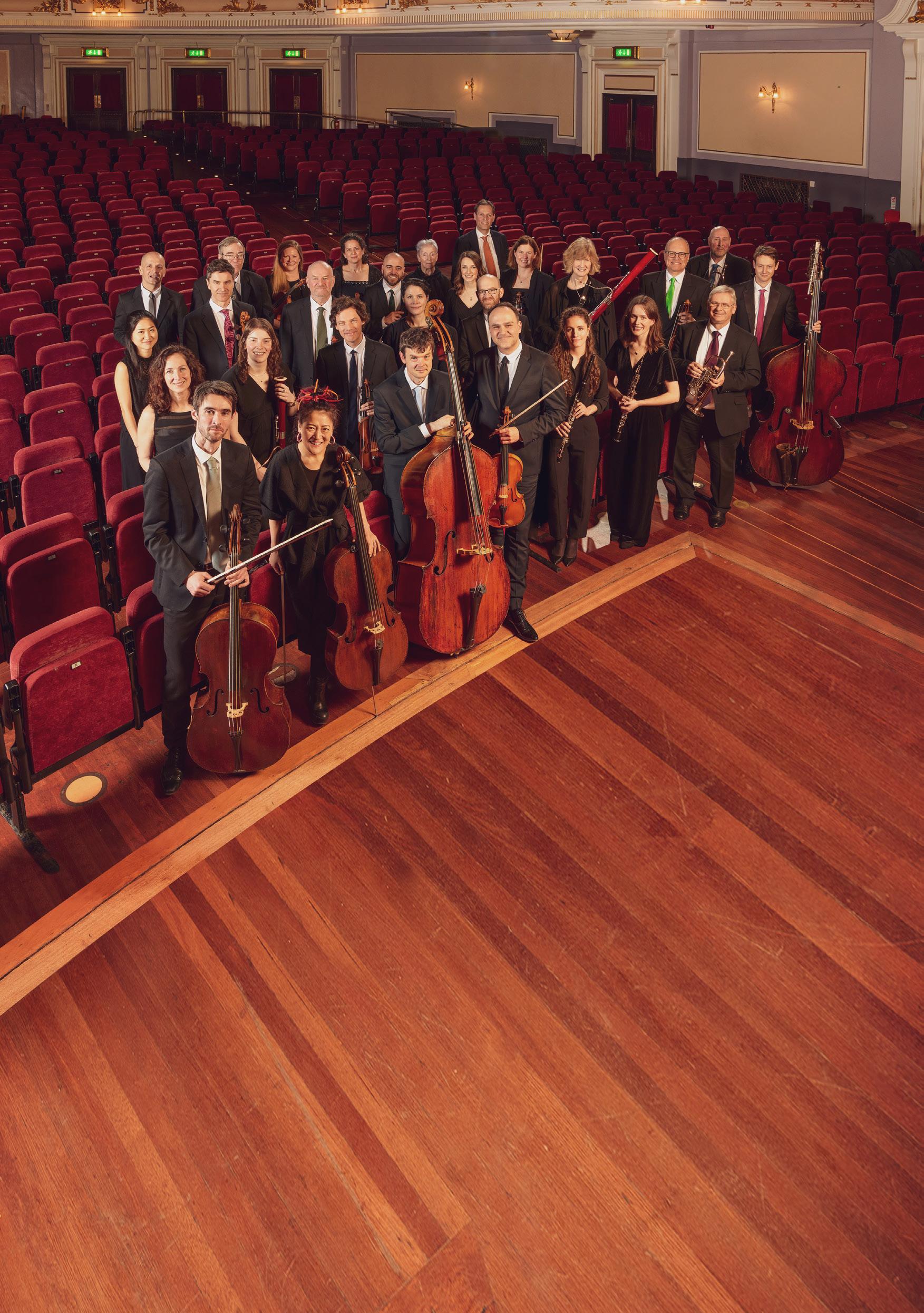
“A crack musical team at the top of its game.”
Information correct at the time of going to print
First Violin
Afonso Fesch
Alice Evans
Kana Kawashima
Aisling O’Dea
Siún Milne
Fiona Alexander
Amira Bedrush-McDonald
Second Violin
Marcus Barcham Stevens
Gordon Bragg
Michelle Dierx
Rachel Smith
Niamh Lyons
Sarah Bevan Baker
Kristin Deeken
Viola
Max Mandel
Zoë Matthews
Brian Schiele
Steve King
Liam Brolly
Cello
Will Conway
Su-a Lee
Donald Gillan
Eric de Wit
Bass
Nikita Naumov
Jamie Kenny
Flute
André Cebrián
Marta Gómez
Piccolo
Marta Gómez
Oboe
Robin Williams
Katherine Bryer
Fraser Kelman
Cor Anglais
Katherine Bryer
Clarinet
Maximiliano Martín
William Stafford
Calum Robertson
Bass Clarinet
William Stafford
Marta Gómez
Sub-Principal Flute
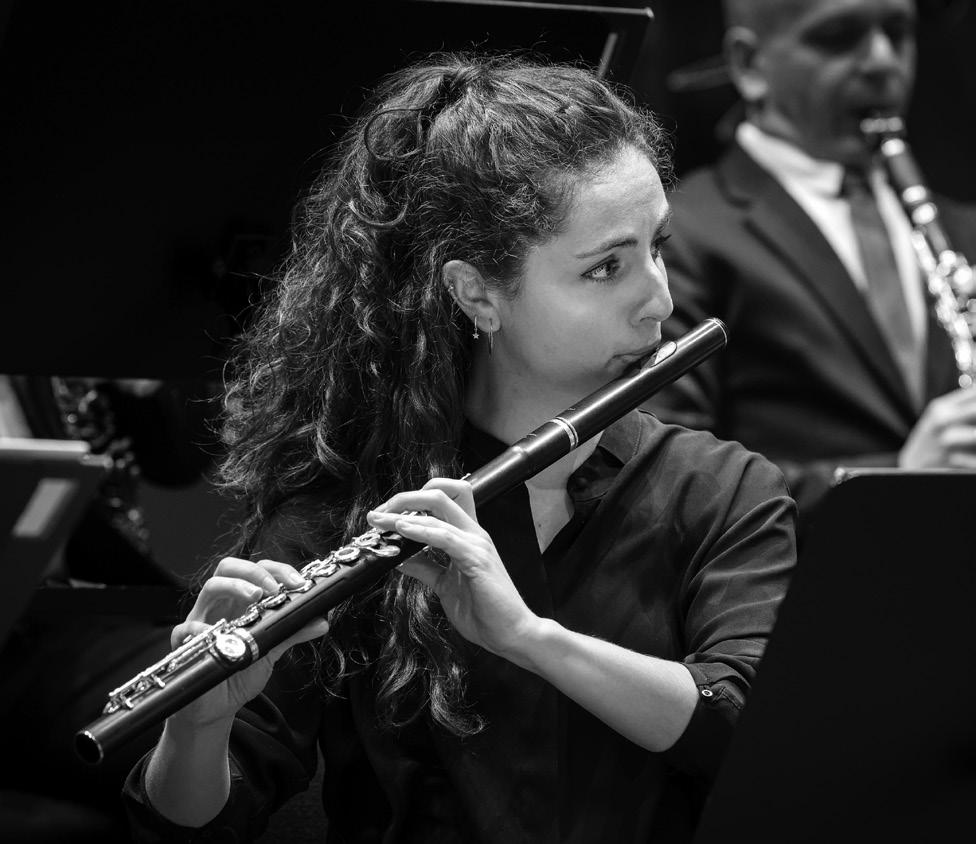
Bassoon
Cerys Ambrose-Evans
Alison Green
Horn
Lauren Reeve-Rawlings
Martin Lawrence
Joe Walters
Rachel Brady
Trumpet
Peter Franks
Shaun Harrold
Trombone
Duncan Wilson
Paul Stone
Alan Adams
Timpani/ Percussion
Tom Hunter
CAPPERAULD (b. 1989)
The Origin of Colour (2023)
(SCO Commission, World Premiere)
Commissioned by the Scottish Chamber Orchestra, and with generous support from the Vaughan Williams Foundation and the Hinrichsen Foundation.


BRUCH (1838-1920)
Concerto for Clarinet and Viola, Op 88 (1911)
Andante con moto
Allegro moderato
Allegro molto
BEETHOVEN (1770-1827)
Symphony No 3 in E flat, ‘Eroica’, Op 55 (1803)
Allegro con brio
Marcia funebre: Adagio assai
Scherzo: Allegro vivace
Finale: Allegro molto
Welcome to the inaugural concert in the Scottish Chamber Orchestra’s 50th Anniversary Season. And as befits such an occasion, we have music with all the glittering colours, heart-on-sleeve emotion and daring heroism that you might anticipate.
Those kaleidoscopic hues come courtesy of our opening work, a brand new piece that’s receiving its very first performances, by Scottish composer Jay Capperauld, the SCO’s Associate Composer. He writes:
"The Origin of Colour takes its inspiration from a short story in Italo Calvino’s Cosmicomics series called Without Colours, which tells a surrealist tale of the creation of colour on Earth. In the beginning, the world exists in whites and greys, where objects and people are shapeless entities bumping into each other in transluscent static hues. Suddenly a meteor rips through the sky illuminating the world for the first time, highlighting purple chasms and orange mountains; earthquakes emit blue fluids to form the first oceans; the violet Sun sets for the first time; the first black night reveals the stars; newly formed pink clouds unleash golden lightning; post-storm rainbows appear and now the world is full of blue skies, yellow fish, green trees and red fires.
Calvino’s story is, above all, a love story between two characters who find and lose each other in the chaos of the Earth’s formation of colour. The dazzling quality of these new colours leaves one particular character in fear of this chaotic new world, and they decide to hide in a cave where colour did not reach. One final earthquake collapses the entrance to the cave, leaving them isolated from their lover and the colourful new world on the other side.
This new showpiece for chamber orchestra attempts to capture Calvino’s creation story in a musical journey that maps the creation of colour on Earth from the hollow, translucent landscape described by Calvino to a kaleidoscopically vibrant world that is both beautiful and terrifying in equal measure."
After Jay Capperauld’s musical explosion of colour, we move on to a piece that celebrates the mellow and the autumnal, in an intimate conversation between two instruments. How Max Bruch ended up writing his 1911 Concerto for Clarinet and Viola is a story of family, tradition and latelife inspiration.
But before we come to that, let’s acknowledge that it can’t have been easy for the 73-year-old Bruch still to be viewed as the composer of that Violin Concerto, his First. To many, it’s simply the Bruch Violin Concerto, despite the fact that he wrote
three of them (plus the Scottish Fantasy and two violin-and-orchestra Serenades), as just one strand in a broad and prolific output that also included oratorios, symphonies, operas and a wealth of choral music. By 1911, that Violin Concerto had been around for 45 years, and Bruch himself had even come to resent its success and the extent to which it overshadowed his other music, and his broader achievements. He was also a respected conductor (of the Liverpool Philharmonic Society from 1880 to 1883, for example) and a revered teacher at Berlin’s Hochschule für Musik (where his pupils included Vaughan Williams and Respighi).
His musical style – deeply lyrical, warmly Romantic, easy on the ear, and with a lot of classical craftsmanship behind it – has often been somewhat scorned as backwardlooking, or not in keeping with its times. It’s true that his pieces sometimes sound as though they come from several decades before the date they were actually written.
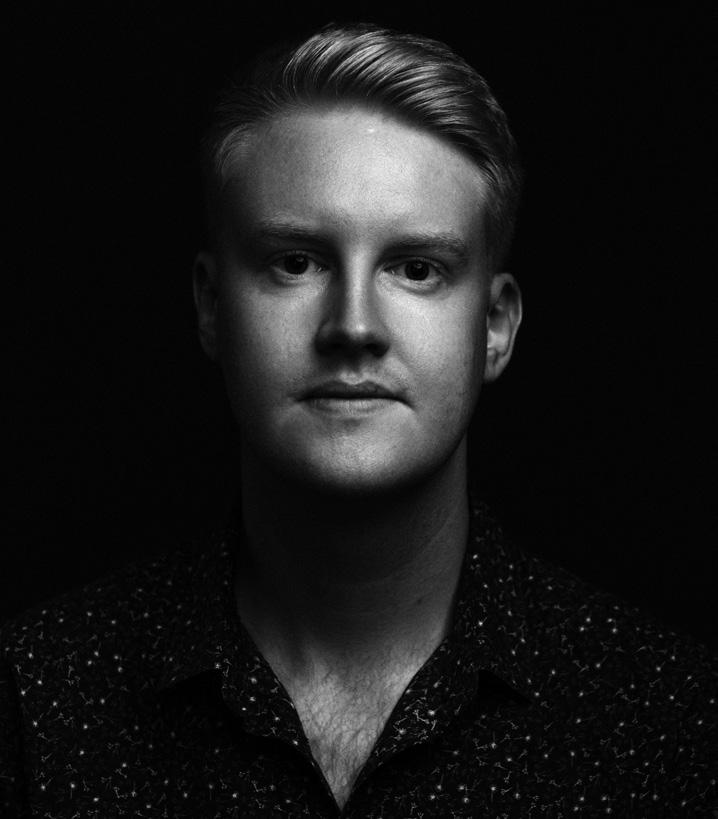
TheOriginofColourtakes itsinspirationfromashort storyinItaloCalvino’s Cosmicomics series called WithoutColours,which tells a surrealist tale of the creation of colour on Earth.Jay Capperauld
Early in his career, Bruch made a point of rejecting the pioneering musical ideas and dangerously progressive tendences of composers such as Liszt and Wagner, favouring instead the purer, simpler musical styles of figures such as Mendelssohn or Schumann. By the time he came to write his Concerto for Viola and Clarinet, however, musical thinking had moved on even further. 1911 was the year of Stravinsky’s boundary-pushing Petrushka , of Mahler’s life-and-deathcontemplating Das Lied von der Erde , and of Schoenberg’s terrifyingly expressionist Pierrot lunaire (which would be premiered just a few months after the Viola and Clarinet Concerto, following a notorious 40 rehearsals). Just two years later would come Stravinsky’s century-defining The Rite of Spring – and the riot it famously provoked. Despite such criticisms of Bruch’s more traditionalist style, however, nowadays we’re far more relaxed about accepting that the composer was simply

following his own path, and being true to his own musical values.
Like both Mozart and Brahms before him, Bruch was a late admirer of the clarinet. He was in his 70s when he wrote first his Eight Pieces for Clarinet, Viola and Piano, and then tonight’s Concerto. And like those earlier composers, it was a particular virtuoso clarinettist who inspired Bruch’s fascination with the instrument – in this case, his own son, Max Felix Bruch.
It was Max Felix who gave the Concerto’s first performance, alongside his cosoloist Willy Hess, a virtuoso viola and violin player, and also Bruch’s friend and colleague as professor at Berlin’s Hochschüle. The premiere took place on 5 March 1912 in the northern German port city of Wilhelmshaven – ‘in front of all the admirals and captains of our navy’, the ever patriotic composer later remembered.
Bruchmadeapointof rejectingthepioneering musical ideas and dangerouslyprogressive tendencesofcomposers suchasLisztandWagner, favouringinsteadthe purer,simplermusical stylesoffiguressuch as Mendelssohn or Schumann.Max Bruch
Bruch dedicated the work to both his son and Hess, and that dedication makes a lot of sense in terms of the warm intimacy of the Concerto, which at times feels like a genial conversation between friends. The piece also takes an unusual slant on the traditional three-movement concerto form, beginning slowly and getting progressively quicker until it reaches its vigorous finale.
Assertive solos introduce both soloists individually at the beginning of the first movement, though they quickly come together in the kind of close, generous collaboration that will mark out the Concerto overall. They first share a slowmoving, almost hymn-like melody, before a more lyrical theme against pizzicato string accompaniment, which ultimately brings the movement to a hushed close.
There’s an airborne feel to the gentle waltz that begins the quicker second movement, and in its wistful central section the spirit of Mahler never seems far away. Trumpet and drum fanfares take us to a far more dramatic, energetic musical world at the start of the final movement. Nonetheless, when the clarinet enters it’s with a scampering, scurrying theme that later returns in the viola, leading into a quieter second theme against half-heard string tremolos. After a stormy central development section, full of joyful virtuosity for both soloists, the scurrying initial theme propels the Concerto to its optimistic conclusion.
After bright colours and lyrical warmth, we close tonight’s concert with unfettered heroism. And our final piece brings with it one of classical music’s most famous stories. But we’ll let Beethoven’s pupil and secretary Ferdinand Ries tell that tale –after all, he was there in person:
‘In writing this symphony, Beethoven had been thinking of [Napoleon] Bonaparte, but Bonaparte while he was First Consul. At that time Beethoven had the highest esteem for him, and compared him to the greatest consuls of Ancient Rome. Not only I, but many of Beethoven’s closer friends, saw this symphony on his table, beautifully copied in manuscript, with the word “Bonaparte” inscribed at the very top of the title page and “Ludwig van Beethoven” at the very bottom... I was the first to tell him the news that Bonaparte had declared himself Emperor, whereupon he broke into a rage and exclaimed, “So he is no more than a common mortal! Now, too, he will tread under foot all the rights of Man, indulge only his ambition; now he will think himself superior to all men, become a tyrant!” Beethoven went to the table, seized the top of the title page, tore it in half and threw it on the floor. The page had to be recopied, and it was only now that the symphony received the title Sinfonia eroica .’
Unlike many similar far-fetched tales in classical music, this one is almost certainly entirely true. We even have the evidence to prove it – a manuscript score of Beethoven’s Third Symphony, with two subtitles (in Italian and German) naming the Symphony ‘Bonaparte’ that have been scratched out so violently that the paper has been torn through. When the Symphony was eventually published in 1806, it was with the new title Sinfonia eroica, composta per festeggiare il sovvenire di un grande uomo (or, literally, ‘Heroic Symphony, composed to celebrate the memory of a great man’).
So what went wrong with Beethoven’s hopes and dreams for Napoleon? To
answer that, we need to look first at the composer’s own political and philosophical ideas. Influenced by Enlightenment values discussed and debated widely in his birthplace of Bonn, Beethoven held fairly modern-feeling progressive views about the importance of reason and evidence over superstition and blind faith, the rule of law, individual liberty, tolerance and fraternity. To him, Napoleon (early on in his career, at least) represented an embodiment of French Revolution ideals –democracy (of a sort), republicanism over rule by birthright, and brotherhood – and a uniting figure who might at least begin to improve the lot of the working classes across Europe. With that in mind, when Napoleon seemed to turn his back on his earlier ideals, you can understand why Beethoven was a bit upset.
The composer’s politics are far from a straightforward story, however: in fact, Beethoven’s apparently progressive
views were deeply compromised. He was so heavily reliant on support from aristocratic noblemen that he must have had a fair bit of cognitive dissonance to deal with. Indeed, there’s evidence to suggest that he’d actually re-dedicated his Third Symphony to Prince Joseph Franz Maximilian Lobkowitz, one of his most dedicated aristocratic supporters, before the scratching-out incident even occurred. In practical terms, he simply wanted to ensure he’d receive the Prince’s generous commissioning sum (although at that stage he retained the ‘Bonaparte’ title).
Alongside these wider political and philosophical dilemmas, however, Beethoven was also facing increasingly intense personal traumas just before he began work on the 'Eroica' in late 1803. Chief among them was his inexorably worsening hearing. Beethoven’s despair found its nadir in October 1803 with what’s become known as his Heiligenstadt
 Beethoven's title page which shows his erasure of dedication of the work to Napoleon
Beethoven's title page which shows his erasure of dedication of the work to Napoleon
Testament, an unflinchingly honest and deeply personal letter to his two brothers, which he never sent. In it, the composer reveals he has contemplated suicide because of his worsening situation, but has resolved to embrace destiny and create art in the face of adversity. It was a road of fresh possibilities that he called his ‘New Path’.
And according to his friend and fellow composer Carl Czerny, Beethoven even specifically linked this ‘New Path’ with his new Symphony, in a conversation with his associate Wenzel Krumpholz: ‘I am far from satisfied with my past works: from today on I shall take a new way,’ he’s reputed to have said. It opens up the tantalising possibility that the true hero depicted in Beethoven’s 'Eroica' Symphony is not Bonaparte, but Beethoven himself.
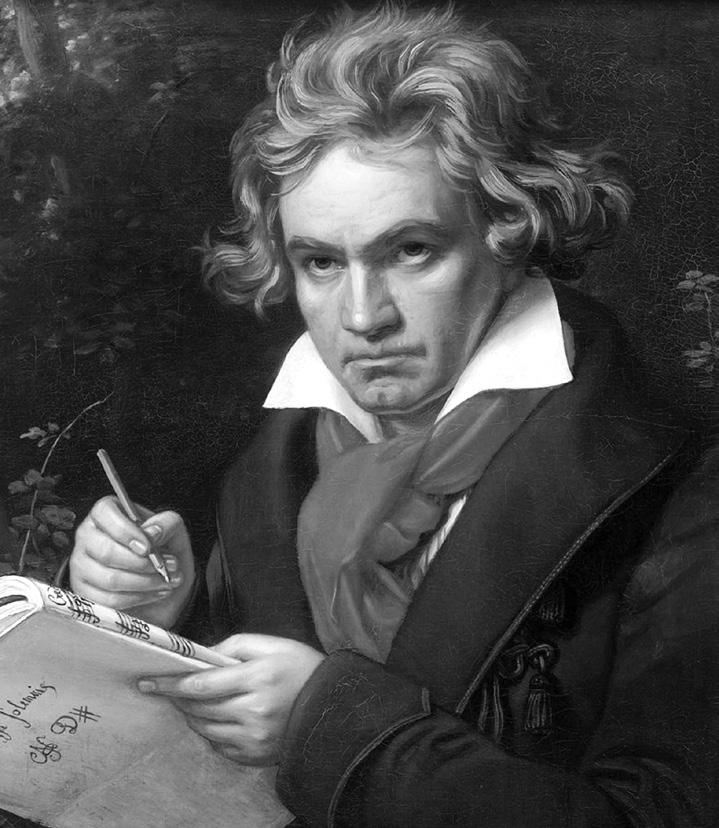
That said, there’s plenty to argue that the Symphony itself, in its extent and ambition,
represents more than enough to deserve being called ‘heroic’. Compared with the earlier symphonies of Haydn and Mozart, and indeed with Beethoven’s own First and Second Symphonies, it’s about twice as long, and several times as ambitious. And in a stroke, it utterly changed what a symphony could be, transforming the form from the politer, briefer, more restrained elegance of Haydn and Mozart (I’m generalising, I know) to an elemental battle of ideas and a profound personal utterance that would pave the way for the symphonies of Schumann, Mahler, Tchaikovsky, Shostakovich, Sibelius, Nielsen, Vaughan Williams, Maxwell Davies – I could go on.
No wonder early reactions to Beethoven’s 'Eroica' were a bit – well, mixed. Following private rehearsals and performances at Prince Lobkowitz’s Vienna palace, the Symphony’s first public performance, on 7 April 1805 in the Austrian capital, raised
Itopensupthe tantalisingpossibility that the true hero depictedinBeethoven’s 'Eroica'Symphonyisnot Bonaparte,but Beethoven himself.Ludwig van Beethoven
quite a bit of criticism, if not downright confusion. The Berlinische musikalische Zeitung described the Symphony as ‘so shrill and complicated that only those who worship the failings and merits of this composer with equal fire… could find pleasure in it’. Czerny later remembered an audience member crying out: ‘I’d give another kreutzer if it would stop!’
More than two centuries later, the Symphony has lost none of its power or visionary ambition, but we’re probably slightly more used to music that dares to consider weighty subjects such as life, death, resilience and hope. Beethoven’s previous two symphonies had eased listeners into their drama of ideas with lengthy, slow introductions. Here, however, Beethoven throws us in head first with two explosive, defiant chords, before the first movement’s main theme launches, at first quietly on the cellos. The second main theme – which arrives after several far bolder statements of that opening melody –is a more lyrical, yearning theme initially for woodwind choirs, based around repeating notes. Just when things are quietening down expectantly towards the end of the movement’s stormy central development section, however, a lone horn can’t resist jumping in prematurely with the opening melody – only to be quickly silenced by the rest of the orchestra.
sadness, and it slumps to an exhausted close.
You could hardly imagine a greater contrast than with the chattering energy of Beethoven’s third movement scherzo, all propulsive repeated notes, and with the orchestra’s three horns put to good use in its central Trio section. Beethoven saves a lot of his ambition and expertise, however, for his expansive, exuberant Finale, what’s effectively a set of ten variations on a theme. And if that theme sounds vaguely familiar, it’s arguably what lies behind a lot of the music we’ve already heard in the Symphony. It was also a melody that Beethoven himself clearly adored. It began life entertaining Viennese dancers as one of the 12 Contredanses he composed in 1801 for the Austrian capital’s ballrooms, and he went on to use it in his ballet score The Creatures of Prometheus, as well as in his piano Variations and Fugue, Op 35 (more commonly known as the ‘Eroica’ Variations).
Beethoven’s funeral march of a second movement is so solemn that it’s been regularly used in actual remembrance ceremonies – to commemorate such diverse figures as fellow composer Felix Mendelssohn in 1847, or Field Marshall Rommel in 1944. Its moments of brightness – including a more tripping central section – only serve to offset its mood of deep
It’s a simple, unpretentious tune, albeit a catchy one that lodges in the brain, but it’s hardly sophisticated or complex – which is precisely the point, since it allows Beethoven to show us what he can do with it. And what he does is to take it on a journey from humble origins – we hear just the tune’s bassline to start with – to transcendent glory, by way of contrapuntal workouts, operatic elegance, and plenty more. By the time the 'Eroica' reaches its joyful, propulsive close, its sense of heroism is shared by composer, performers, conductor, the music itself – and arguably even those listening who’ve been swept along by its challenging, pioneering arguments.
© David KettleAt the Scottish Chamber Orchestra Maxim Emelyanychev follows in the footsteps of just five previous Principal Conductors in the Orchestra’s 49-year history; Roderick Brydon (1974-1983), Jukka-Pekka Saraste (1987-1991), Ivor Bolton (1994-1996), Joseph Swensen (1996-2005) and Robin Ticciati (2009-2018).
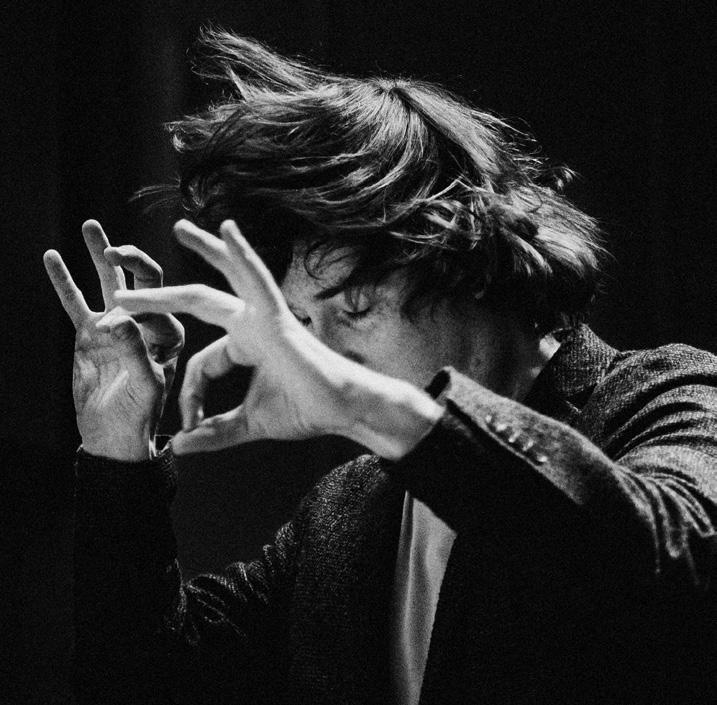
Recent highlights have included debuts with some of the most prestigious international orchestras: Accademia Nazionale di Santa Cecilia, Royal Concertgebouw Orchestra, Rotterdam Philharmonic, Deutsches Symphonie-Orchester, Toronto Symphony and Swedish Radio Symphony Orchestra, as well as returns to the Antwerp Symphony, the Orchestre National du Capitole de Toulouse, the Royal Liverpool Philharmonic and a European tour with the Scottish Chamber Orchestra, followed by appearances at the Radio-France Montpellier Festival and the Edinburgh International Festival.
In October 2022, Maxim toured the USA with the Scottish Chamber Orchestra and made his debut with the Berlin Philharmonic. Other touring in 2022/23 includes the New Japan Philharmonic, the Osaka Kansai Philharmonic, the Bergen Philharmonic Orchestra, the Helsinki Radio Symphony Orchestra, the Czech Philharmonic Orchestra and the Rotterdam Philharmonic Orchestra. He also returns to the Orchestre National du Capitole de Toulouse and to the Royal Opera House in Mozart's Die Zauberflöte
He regularly collaborates with renowned artists such as Max Emanuel Cenčić, Patrizia Ciofi, Joyce DiDonato, Franco Fagioli, Richard Goode, Sophie Karthäuser, Stephen Hough, Katia and Marielle Labèque, Marie-Nicole Lemieux, Julia Lezhneva, Alexei Lubimov, Riccardo Minasi, Xavier Sabata and Dmitry Sinkovsky.
Maxim is also a highly respected chamber musician. His most recent recording, of Brahms Violin Sonatas with long-time collaborator and friend Aylen Pritchin, was released on Aparté in December 2021 and has attracted outstanding reviews internationally. With the Scottish Chamber Orchestra, Maxim has recorded Schubert Symphony No 9 – the symphony with which he made his debut with the orchestra – which was released on Linn Records in November 2019.
For full biography please visit sco.org.uk
Spanish Clarinettist and international soloist Maximiliano Martín is one of the most exciting and charismatic musicians of his generation. He combines his position of Principal Clarinet of the SCO with solo, chamber music engagements and masterclasses all around the world.
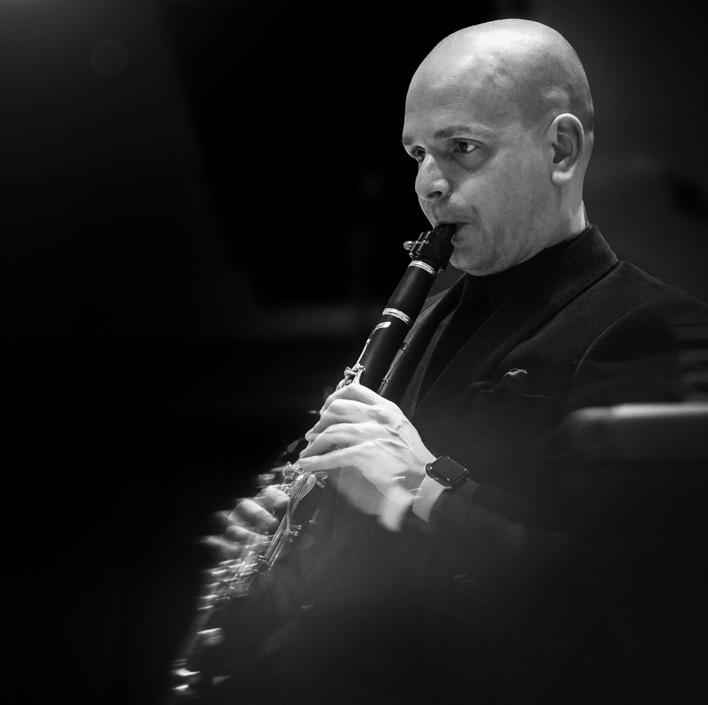
Maximiliano has appeared as a soloist and chamber musician in many of the world's most prestigious venues including the BBC Proms at Cadogan Hall, Wigmore Hall, Library of Congress in Washington, Mozart Hall in Seoul, Laeiszhalle Hamburg, Durban City Hall in South Africa, and Teatro Monumental in Madrid. Highlights of the past years have included concertos with the SCO, European Union Chamber Orchestra, and Orquesta Filarmónica de Las Palmas de Gran Canaria, amongst others. He performs regularly with ensembles and artists such as London Conchord Ensemble, Doric and Casals String Quartets, François Leleux, Pekka Kuusisto and Llŷr Williams.
Born in La Orotava (Tenerife), he studied at the Conservatorio Superior de Musica in Tenerife, Barcelona School of Music and at the Royal College of Music, where he held the prestigious Wilkins-Mackerras Scholarship, graduated with distinction and received the Frederick Thurston prize. His teachers have included Joan Enric Lluna, Richard Hosford and Robert Hill. Maximiliano was a prize-winner in the Howarth Clarinet Competition of London and at the Bristol Chamber Music International Competition. He is one of the Artistic Directors of the Chamber Music Festival of La Villa de La Orotava, held every year in his hometown.
Maximiliano Martín is a Buffet Crampon Artist and plays with Buffet Tosca Clarinets.
Maximiliano's Chair is kindly supported by Stuart and Alison Paul
Born and raised in Toronto, Canada, violist Max Mandel enjoys a varied and acclaimed career as a chamber musician, soloist, orchestral musician and speaker.
Principal Viola of the Scottish Chamber Orchestra and the Orchestra of the Age of Enlightenment he is a also a member of the trailblazing ensemble FLUX Quartet and the Mozart specialists Spunicunifait.
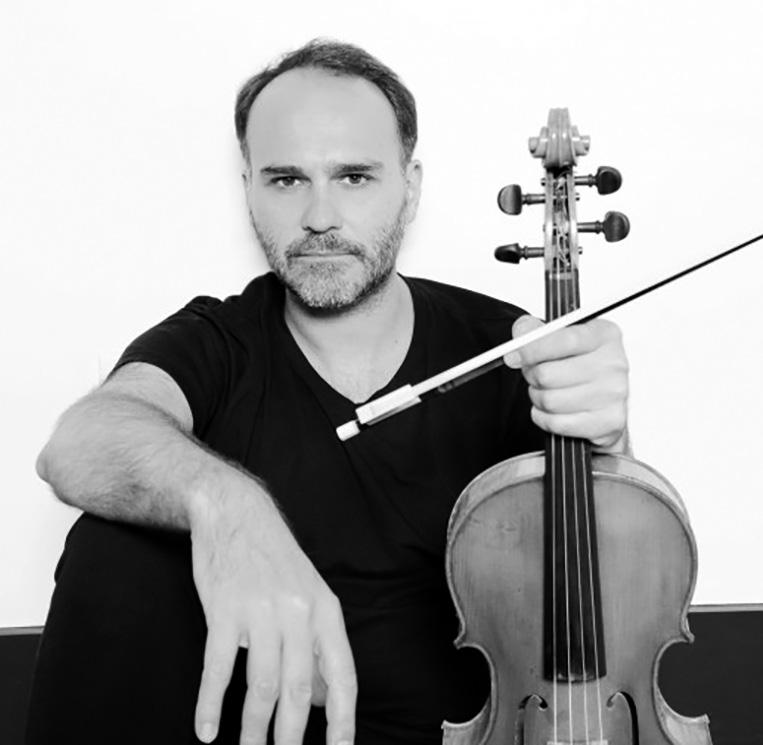
He has appeared as guest Principal Viola with the London Symphony Orchestra, the Chamber Orchestra of Europe, the Australian Chamber Orchestra, the Academy of Ancient Music, and the Handel & Haydn Society amongst others. Other group affiliations include the Smithsonian Chamber Players, Tafelmusik Baroque Orchestra and the Silk Road Ensemble.
Recent recordings include Toshi Ichiyanagi String Quartets with FLUX on Camerata Records and Mozart’s Sinfonia Concertante with violinist Aisslinn Nosky and the Handel & Haydn Society Orchestra on Coro Records.
Max's Chair is kindly supported by Kenneth and Martha Barker
The Scottish Chamber Orchestra (SCO) is one of Scotland’s five National Performing Companies and has been a galvanizing force in Scotland’s music scene since its inception in 1974. The SCO believes that access to world-class music is not a luxury but something that everyone should have the opportunity to participate in, helping individuals and communities everywhere to thrive. Funded by the Scottish Government, City of Edinburgh Council and a community of philanthropic supporters, the SCO has an international reputation for exceptional, idiomatic performances: from mainstream classical music to newly commissioned works, each year its wide-ranging programme of work is presented across the length and breadth of Scotland, overseas and increasingly online.
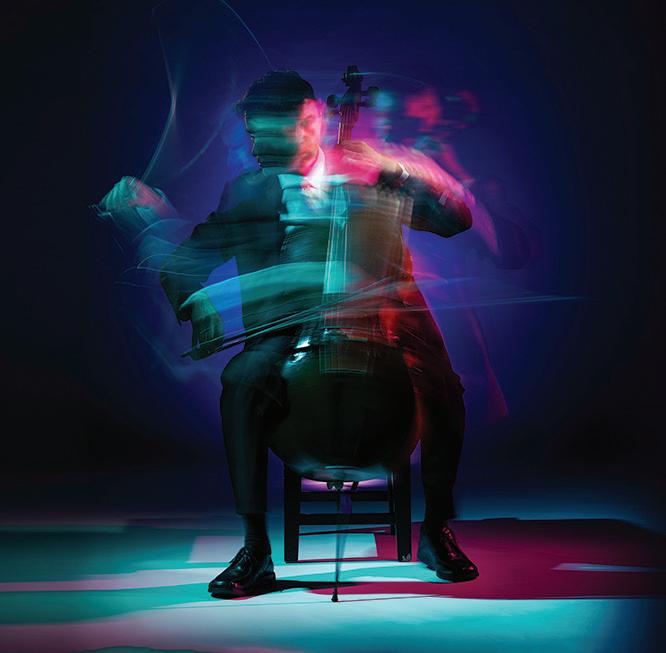
Equally at home on and off the concert stage, each one of the SCO’s highly talented and creative musicians and staff is passionate about transforming and enhancing lives through the power of music. The SCO’s Creative Learning programme engages people of all ages and backgrounds with a diverse range of projects, concerts, participatory workshops and resources. The SCO’s current five-year Residency in Edinburgh’s Craigmillar builds on the area’s extraordinary history of Community Arts, connecting the local community with a national cultural resource.
An exciting new chapter for the SCO began in September 2019 with the arrival of dynamic young conductor Maxim Emelyanychev as the Orchestra’s Principal Conductor. His tenure has recently been extended until 2028. The SCO and Emelyanychev released their first album together (Linn Records) in November 2019 to widespread critical acclaim. Their second recording together, of Mendelssohn symphonies, is due for release in November 2023.
The SCO also has long-standing associations with many eminent guest conductors and directors including Andrew Manze, Pekka Kuusisto, François Leleux, Nicola Benedetti, Isabelle van Keulen, Anthony Marwood, Richard Egarr, Mark Wigglesworth, John Storgårds and Conductor Emeritus Joseph Swensen.
The Orchestra’s current Associate Composer is Jay Capperauld. The SCO enjoys close relationships with numerous leading composers and has commissioned around 200 new works, including pieces by the late Sir Peter Maxwell Davies, Sir James MacMillan, Anna Clyne, Sally Beamish, Martin Suckling, Einojuhani Rautavaara, Karin Rehnqvist, Mark-Anthony Turnage and Nico Muhly.



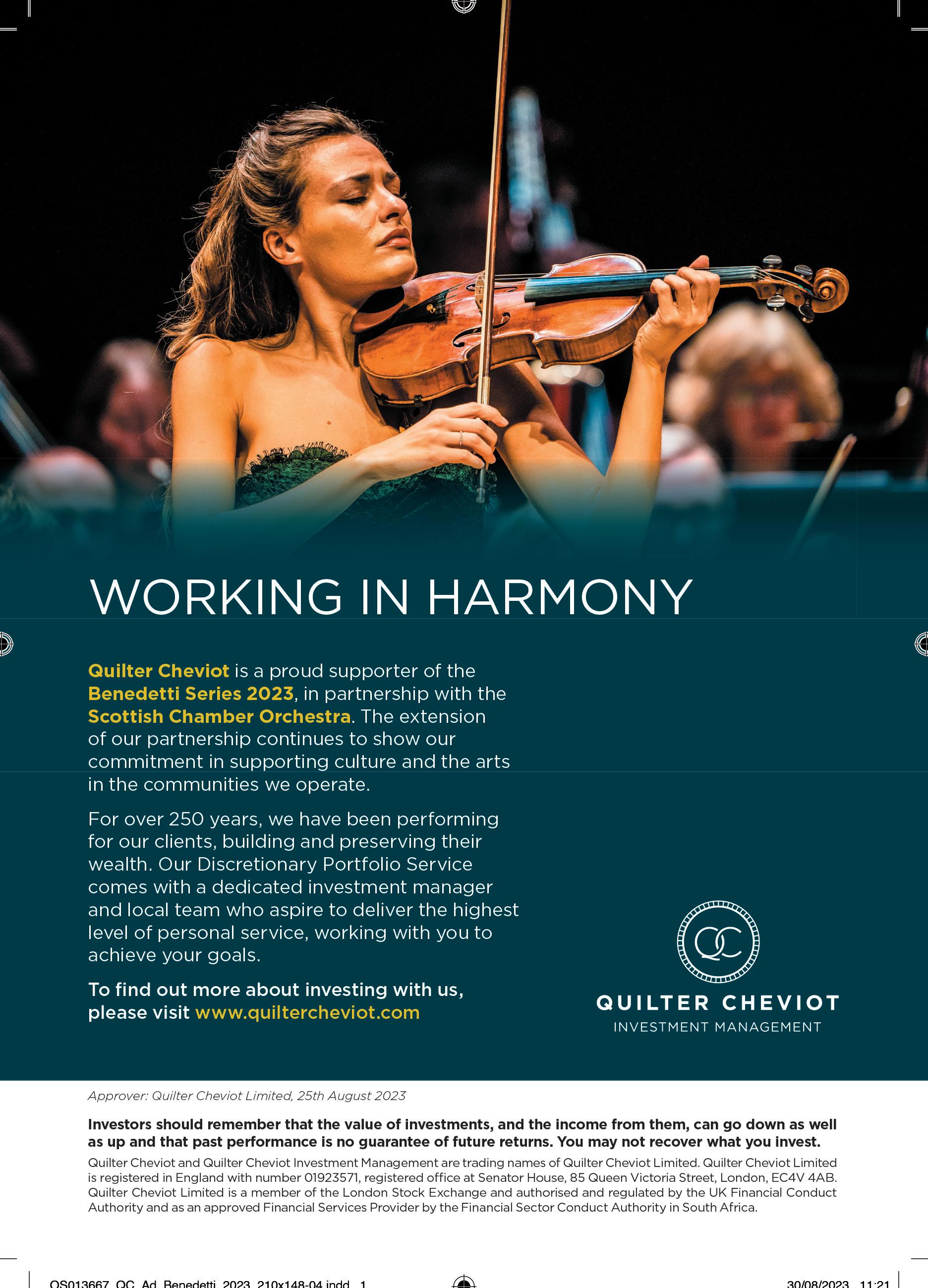
For 50 years, the SCO has inspired audiences across Scotland and beyond.
From world-class music-making to pioneering creative learning and community work, we are passionate about transforming lives through the power of music and we could not do it without regular donations from our valued supporters.

If you are passionate about music, and want to contribute to the SCO’s continued success, please consider making a monthly or annual donation today. Each and every contribution is crucial, and your support is truly appreciated.
For more information on how you can become a regular donor, please get in touch with Hannah Wilkinson on 0131 478 8364 or hannah.wilkinson@sco.org.uk
sco.org.uk/support-us